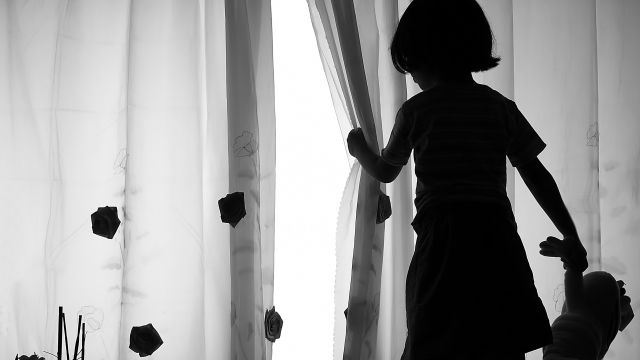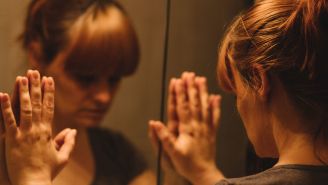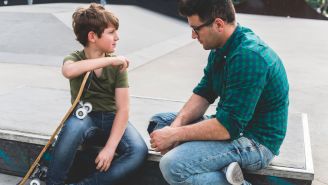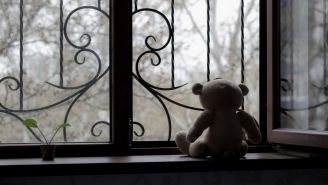Updated on December 2, 2024.
In 2022, about 559,000 children were victims of abuse and neglect in the United States, according to the Children’s Bureau of the U.S. Department of Health and Human Services. About 74.3 percent of these children were neglected, 17 percent were physically abused, 10.6 percent were sexually abused, and 6.8 percent were abused psychologically.
Visible injuries like bruises and broken bones are perhaps the best-known signs of child abuse, but most signs are not as noticeable. Here’s what you need to know about child abuse, who’s most at risk, and what you can do to help.
Who’s at risk
Child abuse can happen to any child, but some groups are more at risk than others.
The age of victims is a big risk factor. Children younger than 1 year old are abused at the rate of about 22.2 per 1,000 children, the highest rate compared to any other age.
Children with special needs, such as chronic mental or physical health issues and disabilities are at a greater risk of being abused or neglected than children without disabilities.
While overall child abuse or neglect happens to about 7.7 in 1,000 children, for some populations, the rates are higher. For African-American children it’s about 12.1 per 1,000 children, while for American Indian or Alaska Native children, it’s about 14.3 per 1,000 children. More research is needed, but there are some indications that LGBTQ+ children may be at heightened risk for some forms of child abuse, particularly transgender adolescents.
The risk of a perpetrator being in a child’s family or home rises with a number of factors, including the child’s caregivers experiencing:
- Drug or alcohol misuse
- Depression and other mental health issues
- Economic stress and low income
- Parenting stress
- The effects of their own childhood trauma
- Lack of understanding of children’s needs
- Relationship violence
Families who are more isolated, those with incarcerated family members, and those in which corporal punishment is accepted and used are also more likely to be families in which a child is abused by caregivers.
Communities also play a role in a child’s risk of being abused or neglected. The more obvious community risk factors include high rates of crime, violence, poverty, food insecurity, and unemployment. But there are other, less immediately obvious risk factors. Neighborhoods where people don’t know each other, or where there aren’t many activities available for young people, can raise the risk of abuse, too.
Know the signs
There are different kinds of child abuse, including neglect, physical abuse, sexual abuse, and emotional abuse. In some cases, children may be able to articulate what is happening to them and report that they’re being harmed by an adult. In other cases, children may exhibit different signs and symptoms, based on the type of abuse they’re experiencing.
Child neglect
This is the most common form of child abuse. It occurs when a child isn’t getting the physical, emotional, and medical attention they need to thrive. Signs of a neglected child may include:
- Lack of or slowed growth
- Excessive weight and unaddressed related medical issues
- Unaddressed medical, psychological, or dental issues
- Poor hygiene
- A tendency to steal or hoard food
- Low attendance in school
- Lack of weather-appropriate clothing
Physical abuse
This form of maltreatment involves a child being intentionally physically hurt or put at risk of physical injury. Signs of physical abuse in children include:
- Injuries that don’t have (or don’t match) an explanation, such as broken bones, burns, black eyes or other bruises, or bite marks
- Fear, anxiety, depression, aggression, or appearing withdrawn
- Fear of parents, adults, and/or of going home at the end of the day
- Abuse of animals
- Big changes in habits, such as around eating
Sexual abuse
This form of abuse occurs when a child is used intentionally by an adult for sexual reasons. Signs may include:
- Trouble sitting or walking
- Bruising, swelling, or bleeding in their genital area
- Nightmares and bedwetting
- A big change in appetite
- Running away
- Growing quickly attached when they meet new adults
- A sudden knowledge of sexual behavior
- Being sexually inappropriate with other children
- Pregnancy or a sexually transmitted infection
Emotional abuse
This occurs when a child’s mental well-being is being harmed through verbal abuse, rejection, or through isolating or ignoring the child. A child experiencing emotional abuse may show these signs:
- Extreme behaviors, such as being very passive or very aggressive
- Hyper-mature habits, or conversely, unusually immature behaviors like rocking back and forth or biting
- Low self-confidence
- Depression or suicidal thoughts
- Lowered interest in and enthusiasm about socializing or learning
- Moving backwards rather than forwards in acquiring developmental skills
- Seems to strongly want affection
- Refuses or avoids some situations, like the bus or school
What to do
If you suspect or know that a child is being abused or neglected, you may be required to report it to the authorities. Many states require all adults to report, while others require professionals working in certain fields, which usually include the fields of:
- Law enforcement
- Social work
- Mental health
- Healthcare
- Education
- The clergy
- Childcare
Often, even if you aren’t working in one of these fields, you’re still required to report if you work for an organization or institution in these fields. For example, if you’re a facilities staff member at a hospital or school, you may still be required to report.
Regardless of whether you’re required by law, you should consider reporting suspected abuse or neglect. With that being said, it’s also important to examine whether your individual biases are affecting your interpretation of some signs.
For a variety of complex reasons, many more children of color are involved in the U.S. child welfare system than white children. And the family of a child experiencing neglect, for example, may not be intentionally or willingly engaging in neglect.
Instead, they may be experiencing poverty, hardship, and a lack of key resources, like food or childcare. Removing a child from a family can cause serious harm, and in many cases helping a family get connected with community resources can be a more long-term solution.
A helpful option is to contact the National Child Abuse Hotline by calling 1-800-4-A-CHILD (1-800-422-4453). These calls are completely confidential and offer 24/7 access to crisis counselors who can answer your questions, provide emotional support, and refer you to social services.
Finally, invest in healthy and strong relationships with the children around you. Develop an understanding of how children connect with those near them and do your best to offer help. You could save a life.






